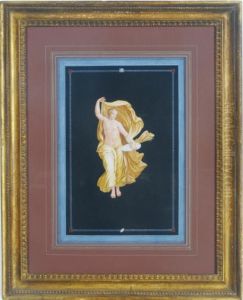Camillo Buti Paintings
Camillo Buti was an Italian painter and architect of the Baroque period, whose contributions, while not as widely recognized as those of his contemporaries, played a significant role in the artistic developments of his time. Born in 1601, Buti's early life is shrouded in relative obscurity, as detailed records of his family background and education are sparse. However, it is known that he was active during a period in which the Baroque style was flourishing in Italy, a style characterized by dramatic expression, bold ornamentation, and a vivid play of light and shadow, elements that would come to influence his work.
Buti's career was marked by his dual talents in both painting and architecture, a common combination among artists of the Baroque era, who often engaged in multidisciplinary pursuits. His paintings are noted for their dynamic compositions and emotional intensity, embodying the theatricality that is a hallmark of the Baroque. Yet, it is perhaps in architecture that Buti made his most enduring mark, contributing to the design and construction of several significant buildings of his time. These works are characterized by their grandeur and the harmonious integration of architectural elements with their surroundings, reflecting Buti's deep understanding of Baroque aesthetics.
Despite his achievements, Camillo Buti's name is not as prominent in the annals of art history as those of his peers, such as Bernini or Borromini. This relative anonymity may be attributed to various factors, including the possible loss of many of his works to time or the overshadowing presence of his more famous contemporaries. Nevertheless, scholars who have studied his surviving paintings and architectural designs recognize Buti as a skilled practitioner of the Baroque style, whose work contributed to the richness and diversity of the period's artistic output.
Buti's life and career encapsulate the vibrant artistic spirit of 17th-century Italy. His contributions, though less celebrated, remain an integral part of the tapestry of Baroque art and architecture. He died in 1681, leaving behind a legacy that, while modest in comparison to the giants of his era, continues to be appreciated by those who explore the depth and breadth of Baroque creativity.
